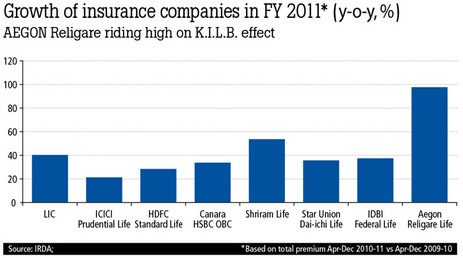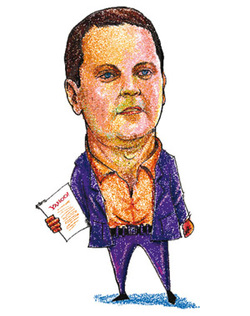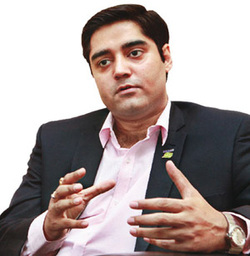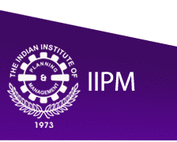Movies Now has Created Ripples in The English Movie Channel space with its HD Offering in a Fairly Short Span of Time. Can it Sustain this Iconic Rise?
 Even discounting the impact of translations, Hollywood has gained immense popularity in certain parts of India. Indeed, English movie channels have played a key role in bringing about that transformation. But unlike the upheaval that the box office typically goes through every week, the English movie channel space in India has seen fairly little flux in terms of competitive positions for quite a while. Star Movies has been heading the genre since years; with HBO at a comfortable number 2 and Sony Pix at number 3. Expat entrant WB and the others contenders like Zee Studio, UTV World Movies and Lumiere have remained specific to their content and positioning, by not catering to the mass market. The competition has drastically increased for local broadcasters with multinationals tying up with local broadcasters to cater to niche categories, which mostly directs towards the core audience of 15-35 SEC AB M/F. Ad rates have seen a constant increase over the years, with major revenue earnings for broadcasters. 2010 has also been a virtual walkover for the English movie channel category, with Star Movies ruling the roost (refer to ‘Wars on the English front’, 4Ps Volume 5 Issue -13, July 2-15, 2010). However, the streak recently broke in January, when the TAM research report revealed that a new entrant has suddenly topped the segment within 4 weeks of its launch and dethroned Star Movies. This challenger is Movies Now, a baby of the Times Group, which, in a short span of time, is already showing the muscle to change the game in the English movie channel genre. Movies Now was launched in the second week of December by Times Television Networks, with the clear USP of ‘Hollywood in HD’. Sunil Lulla, MD & CEO, Times Television Network, comments, “Movies Now challenges the status quo of the category to ensure the audience the best of entertainment. With its first of a kind, state-of-the-art HD Broadcast facility. Movies Now will furnish upscale Indian audiences with clearer, crisper picture quality, superlative sound quality and a wider viewing experience.” Movies Now is the 4th offering from the Times Group after Times Now, ET NOW, & ZOOM, which cater to multiple audiences in Australia, Maldives, Kenya, Nepal, Tanzania & Uganda, besides India. Company sources say that the average TSV on the channel is 58 minutes, while the closest competition records an average TSV of 32 minutes. The average GRP of Movies Now is 26 points, which is the highest in the category. (Source: TAM Media Research, TG: CS 15-34 AB, Period: 4 weeks average of week 52, 2010-week 03, 2011; Markets: Top 8 Metros). For more articles, Click on IIPM ArticleSource : IIPM Editorial, 2011. An Initiative of IIPM, Malay Chaudhuri and Arindam chaudhuri ( Renowned Management Guru and Economist). For More IIPM Info, Visit below mentioned IIPM articles.IIPM ranked No 1 B-School in India
domain-b.com : IIPM ranked ahead of IIMs
IIPM: Management Education India
Prof. Rajita Chaudhuri's WebsiteIIPM in sync with the best of the business world.......Arindam Chaudhuri on Internet.....Arindam Chaudhuri: We need Hazare's leadershipProfessor Arindam Chaudhuri - A Man For The Society....IIPM: Indian Institute of Planning and Management--------------------------------------------------------------------------------------------------------------------------
With The Financial Calender coming to an end, late Kate Tax Assessee are busy Dumping their Hard Earned Money, just to save tax. But more than them, it’s The Insurers who are busy Making Themselves Visible and audible in Order to sell as many Policies as they can, on The Pretext of “Save TAX”
 Close on the heels of financial safety and security, the insurance sector – which as a business model has captured the opportunity arising out of the innate need of the human mind to hedge against any unforeseen situation – has of late been focusing on a new brand and category trigger. The Indian insurance companies with their focus on caring in the physical and emotional realm is no exception. The focus and the trigger arises because despite the fact that insurance is a natural solution, a number of people still view it from the prism of an investment for the purpose of tax saving rather than for its primary benefit – security. That’s why insurance is still never bought but sold in India. And the sales pitch is all the more audible in the last quarter of every financial year, when the idiot box is bombarded with advertisements and new product launches are reported everyday almost unfailingly in the pink papers. As a matter of fact, for a long time, the entire cycle in terms of advertising, marketing, promotions or otherwise is more skewed towards the January-March period.
Though a few of the insurance companies plan their ad expenditure for the entire year, for a number of others, the last quarter of the fiscal accounts for close to 75-80% of their total ad spend. But then, in a way, their act is justified as approximately 40-45% of the sales of insurance policies take place during these three months. However, while this has been a normal play for the past few years, the dynamics of the game is expected to change this time dramatically for the addition of another (unexpected) spender – the Insurance Regulatory and Development Authority (IRDA). Under the provisions of the Insurance Awareness Campaign for the period December 2009 to March 2011, the regulator was allocated Rs.150 million, and till December, it spent only 15% of the amount. And given the fact that the provision has to be accounted for after the completion of the financial year 2010-11, it is likely that we may see some more of public awareness advertisements from IRDA. This means that the common investors will now get a parallel bombardment about making an informed purchase decision, and this will dictate the tone for the battle between insurers to grab a larger share of the 3-month sales pie.
 Nevertheless, the insurance companies, which apparently feel that it is the high brand recall that matters the most in the insurance space, have already adjusted to the situation and are ready to roll. Thus, to grab the consumers attention, the efforts of the insurers have gone up in all directions from catchy taglines to pouring millions in marketing initiatives. Moreover, with the emergence of new players such as IDBI Federal, Apollo Munich, Max Bupa, Aegon Religare, Canara HSBC OBC, First India Life Insurance, Future Generali et al, high decibel campaigns in the recent past have definitely increased. Insurers are now trying to reach out to each and every customer segment – from young children to the pensionable adult – via television, print, internet, radio, outdoor, digital signage and below the line activities. In fact, to ensure their presence through every conceivable medium (duly taking into the profile of their target audience), insurers are not shying from the social media sites to market and advertise their products. So be it the hoardings, which ask people to pause and think about health insurance from the stable of Apollo Munich or Future Generali’s ‘Insurance Week’, which aimed at reminding people the critical need of re-evaluating their insurance needs and highlighted the simple ways of buying insurance; insurers are leaving no stone unturned to woo the consumers. Given the fact that only 14% of the Indian population is covered by health insurance of any form, the efforts of Apollo Munich really serves the purpose of uncomplicating the investors’ dilemma. Future Generali, for its part, used the dismal statistics of insurance – insurance penetration (4.6% in life and 0.61% in non-life), and insurance density – where the scenario is all the more alarming as compared to countries like UK and Japan (where insurance density is 73 and 65 times higher than that in India). And hence their advertising and marketing strategy was oriented at breaking down the barriers of apathy and procrastination that affect the people when it comes to insurance planning. The creative thought behind the entire week-long campaign based on the philosophy of ‘Karta’ and ‘Mukti’, with the intent of making small tangible differences in the way Indian consumers perceive insurance, certainly helped Future Generali in casting a brand leadership statement. Deepak Sood, MD & CEO, Future Generali feels that by virtue of the campaign and a new product – Future Generali Select Insurance Plan – they have given a “touch and feel factor to insurance making it even more interesting and involving for the customer.” For more articles, Click on IIPM Article
Source : IIPM Editorial, 2011. An Initiative of IIPM, Malay Chaudhuri and Arindam chaudhuri ( Renowned Management Guru and Economist). For More IIPM Info, Visit below mentioned IIPM articles.IIPM ranked No 1 B-School in India
domain-b.com : IIPM ranked ahead of IIMs
IIPM: Management Education India
Prof. Rajita Chaudhuri's WebsiteIIPM in sync with the best of the business world.......Arindam Chaudhuri on Internet.....Arindam Chaudhuri: We need Hazare's leadershipProfessor Arindam Chaudhuri - A Man For The Society....IIPM: Indian Institute of Planning and Management--------------------------------------------------------------------------------------------------------------------------
 Search engine Yahoo which has been under pressure in the last few years because of deteriorating market share is again trying a new trick to attain past glory with its “Product Runway” strategy. The latest strategy involves changes being brought about in the looks of Yahoo Mail by the company’s newly appointed Executive Vice President and Chief Product Officer Blake Irving, with his stint at Yahoo being just over 100 days. The company unveiled the new look Yahoo Mail at its headquarters in Sunnyvale, California on September 16, 2010. Yahoo Mail which has a customer base of 281 million will be soon launched in its new avatar and the company believes that the new version will give its mail users a better and faster experience and that the mail service will be compatible with additional devices. We are eagerly waiting to see if this product can actually run and take on the global giant and near monopoly Google!
After a quiet sojourn post liberalisation, Panasonic disappeared. Come 2008 and they were back with a bang. Manish Sharma, the man in command speaks his heart out to Neha Saraiya & Bhuvnesh Talwar on the transformation  Manish Sharma
Director, Marketing, Panasonic India
For a man who has been religiously serving the consumer durable industry for the past 20 years, Manish Sharma was an odd sight. Young, smart, energetic and upbeat as if it was his first day at work, he welcomed us into his office with a smile. As the meeting progressed, his love for the television business became evident. Within seconds, it’s clear that Sharma was meant to be in the electronics industry. Sharma considers himself very lucky due to the fact that he has always been at the right place at the right time. He recalls the way he happened to join companies when they were going through their most challenging times. “In the beginning of my career, I joined LG which had entered India as a joint venture and was struggling to stand on its own feet. After a five year stint at LG, I moved on to Samsung which in those days was betting big on R&D in order to revamp their product line. After Samsung, my biggest challenge came in the form of Haier where I found myself toiling to create its identity in the Indian market. In 2008, I decided to join Panasonic. Known as a top league player around the world for its quality and innovation the company was making a brave and risky attempt to re-establish itself in the Indian market,” says Sharma. The self confessed television buff believes that there is nothing more dynamic and livelier than televisions in the consumer durable segment because the product can speak, interact and build an emotional bond with its customers. But his actual love for televisions boils down to plasma screens. During the initial days of his career, he had a misconception that plasma screens would never be successful in India. This was due to a myth that plasma screens were foreign made products and could never survive the vagaries of both the Indian mindset and environment. That was during the 1990s. Soon after entering Samsung, he realised that he had been wrong all this while. In fact, he became so fascinated with the product that he got a 50 inch plasma screen for his own bedroom. His admiration for the product didn’t end at his home; now he wants the Indian consumers to know about the benefits of plasma screens and has launched a major print campaign for the same. “In order to promote the line of plasma screens from Panasonic, I have recently launched a campaign called ‘Thinking Big of Plasma’ with an aim to educate the consumers and bring in greater awareness about the product.” His aggressive and innovative marketing strategies that have spearheaded Panasonic’s re-establishment drive seem to have paid off big time. While Panasonic’s market share of the LCD market has gone up from 1.2% to 7%, that for plasma screens has thundered up from around 12% to 48%. This has not only given Panasonic a strong foothold in the Indian landscape, but has also transformed its brand image from an audio/VCR firm to that of a digital electronic giant. For more articles, Click on IIPM ArticleSource : IIPM Editorial, 2011. An Initiative of IIPM, Malay Chaudhuri and Arindam chaudhuri ( Renowned Management Guru and Economist). For More IIPM Info, Visit below mentioned IIPM articles.IIPM ranked No 1 B-School in India
domain-b.com : IIPM ranked ahead of IIMs
IIPM: Management Education India
Prof. Rajita Chaudhuri's WebsiteIIPM in sync with the best of the business world.......Arindam Chaudhuri on Internet.....Arindam Chaudhuri: We need Hazare's leadershipProfessor Arindam Chaudhuri - A Man For The Society....IIPM: Indian Institute of Planning and Management--------------------------------------------------------------------------------------------------------------------------
Coca-Cola has gone the ‘milky way’ by foraying into the dairy segment and coming out with a milk-based beverage, Maaza Milky Delite. According to the recent Forbes Top 50 list of the World’s Most Valuable Brands, the ‘thanda’ secures the prestigious third spot in that list. Would the strong brand of Coca-Cola have the mettle to influence veteran players in the desi dairy segment like Amul, Vita and Verka et al? Anand Halve, Director, Chlorophyll, Brand & Communications Consultancy feels, “Coca-Cola might have a huge global marketing presence but in the Indian beverage market, it only occupies the fourth place. In addition to that, the brand name for this milk based beverage is Maaza Milky Delite and not Coca-Cola Milky Delite/Coke Milky Delite which would let them leverage the brand name as such.” That might be the case, but the reality is that Coca Cola’s Thums Up still rules the market at the number one position – and there is no gain saying the fact that Coca Cola remains the master of understanding the Indian youth. For more articles, Click on IIPM ArticleSource : IIPM Editorial, 2011. An Initiative of IIPM, Malay Chaudhuri and Arindam chaudhuri ( Renowned Management Guru and Economist). For More IIPM Info, Visit below mentioned IIPM articles.IIPM ranked No 1 B-School in India
domain-b.com : IIPM ranked ahead of IIMs
IIPM: Management Education India
Prof. Rajita Chaudhuri's WebsiteIIPM in sync with the best of the business world.......Arindam Chaudhuri on Internet.....Arindam Chaudhuri: We need Hazare's leadershipProfessor Arindam Chaudhuri - A Man For The Society....IIPM: Indian Institute of Planning and Management--------------------------------------------------------------------------------------------------------------------------
A detailed look at how this exclusive ranking of top brands in India for 2010 was conducted by 4Ps Business & MarketingThe fifth 4Ps Business & Marketing annual ranking of India’s 100 Most Valuable Brands is here again to tell you which brands struck the cosiest chords with consumers during the year. It was certainly not a cake walk. We teamed up with Indian Council for Market Research (ICMR) to fetch the best from a holistic list of mind-boggling 40,203 brands. However, after a great amount of brain storming, colossal data crunching, and intensive primary research work in three phases over the past seven and a half months, we finally caught on to the swinging mood of the Indian consumers. So, here is the lock, stock and barrel of the method behind the madness of arriving at the 4Ps Business & Marketing India’s 100 Most Valuable Brands 2010… FIRST PHASEThe Phase I started with preparing a holistic list of local, national and international brands (40,203) present in India, which was then scaled down to a master list of 1,412 brands based on the growth, reach, demand and availability (in at least 4 metros and Bengaluru) further divided into 32 broad categories with over 100 sub categories. Both domestic and international brands having their presence in India were taken into consideration for the final phase of the research. Next, ICMR prepared a structured questionnaire on parameters of Brand Awareness and Preference. Based on the questionnaire a primary research was conducted in Delhi, Mumbai, Kolkata, Bengaluru and Chennai with 3,500 respondents. Based on the frequency of brands under the parameters, as found in the primary research, ICMR shortlisted top 200 brands across all categories. SECOND PHASEThe second phase of the survey was initiated after tabulating the top 200 brands. A structured questionnaire was formed and one-on-one interviews were carried out with 6,000 respondents in 10 cities (Delhi, Jaipur, Chandigarh, Mumbai, Kolkata, Bangalore, Hyderabad, Ahmedabad, Pune and Chennai) across India. In order to avoid any bias, the order of the brands was changed for each of the cities. Each of the cities was divided into four zones namely North, South, East and West to ensure complete coverage of the city in terms of the target audience. Further, the respondents were selected based on socioeconomic classification (SEC) i.e. education, occupation, gender and monthly income. In case of the respondents such as housewives, students, et al, the monthly income of the Chief Wage Earner (CWE-Head of Household) has been taken into consideration. This survey intended to account for the Brand Equity (difference between perceived value of the brand and the core product, i.e., the total value of the brand minus that part of the value “owed” to the core product, which equals the value that accrues from the brand part of the product) of various brands by asking the respondents to rate them on the following parameters: Brand Image and Perception: A unique set of associations within the minds of target customers which represent what the brand currently stands for and implies the current promise to customers. For more articles, Click on IIPM Article.Source : IIPM Editorial, 2011. An Initiative of IIPM, Malay Chaudhuri and Arindam chaudhuri ( Renowned Management Guru and Economist). For More IIPM Info, Visit below mentioned IIPM articles.
IIPM ranked No 1 B-School in India
domain-b.com : IIPM ranked ahead of IIMs
IIPM: Management Education India
Prof. Rajita Chaudhuri's WebsiteIIPM in sync with the best of the business world.......Arindam Chaudhuri on Internet.....Arindam Chaudhuri: We need Hazare's leadershipProfessor Arindam Chaudhuri - A Man For The Society....IIPM: Indian Institute of Planning and Management--------------------------------------------------------------------------------------------------------------------------
Nisha Narayanan, Senior Vice-President - Programming & Projects, 93.5 Red FM Red FM has been taken to the streets of smaller towns as well. How difficult is it to maintain the same level of quality in Tier 1 & Tier 3 locations?Initially we existed as SFM / Suryan with around 45 stations set up from Jamshedpur to Shillong and Warangal, Rajkot, Nagpur et al. It has been very challenging to understand the nuances of each local city and overall as a network, Red FM has been local in nature by reflecting the ethos and flavour of the city. The challenge actually lies in the fact that the same quality of being present in the metros has to transcend to other cities as well. Since the re-launch as Red FM, there is a lot more synergy now in the process of consolidation and moving ahead. Your experience in the radio industry spans more than a decade. How has the industry evolved in these many years?I have actually been around for close to two decades in the radio industry. Since the time of All India Radio alone, a lot has evolved in the radio space in terms of commercial space. Initially, individual radio stations had to air programmes for a few hours on AIR by buying commercial air time. Then came Phase I of commercial FM and then Phase 2 opened up the radio spectrum to a wide range of around 91 cities all over India. In Phase 3, radio should see a huge evolvement with 700 licenses and the smaller towns covering at least 60% of population that is exposed to the radio. Earlier, the radio was always disregarded. However now, with the setting up of stations in Phase 2 and Internet radio, campus radio and community radio coming of age, the medium has come to be regarded by all as a serious medium. We now even have an industry body to take up the Radio issues with the Government. The radio is projected to grow at a CAGR of 14% from 2010 to 2014. Further to that, it is also being looked up as an advertising option. Unfortunately, policy restrictions are still a hindrance. It must be more flexible to FDI, news & current affairs, networking, multiplicity in programming which is being looked at for Phase 3. From ‘Aap ki farmaish’ to ‘Malishka ke jassos’, how has programming evolved at Red FM?From the early days of ‘Asli Masti’ to ‘Bajaate Raho’, brand Red FM has seen a transformation which holds great significance in the way radio is being perceived today. Through the years, Red FM has been one of the most consistent brands in the industry, be it its music policy of playing only contemporary hits, or its ‘Bajaate Raho’ attitude. Through its innovative promotions, Red FM has been able to strike a chord with the listeners and establish itself as one of the most differentiated brands in the industry today. For more articles, Click on IIPM Article.Source : IIPM Editorial, 2011. An Initiative of IIPM, Malay Chaudhuri and Arindam chaudhuri ( Renowned Management Guru and Economist). For More IIPM Info, Visit below mentioned IIPM articles.
IIPM ranked No 1 B-School in India
domain-b.com : IIPM ranked ahead of IIMs
IIPM: Management Education India
Prof. Rajita Chaudhuri's WebsiteIIPM in sync with the best of the business world.......Arindam Chaudhuri on Internet.....Arindam Chaudhuri: We need Hazare's leadershipProfessor Arindam Chaudhuri - A Man For The Society....IIPM: Indian Institute of Planning and Management--------------------------------------------------------------------------------------------------------------------------
 Red FM What makes 93.5 red FM one of the most preferred radio channels on air today? and what are the issues bothering its management team? 19 years back, any plebeian in India who’d turn on the radio, would sing to the tunes of one channel - the All India Radio (AIR). It was the business and life for all radio listeners. The opening up of radio waves resulted in private FM channels taking up the lead in the FM space in no time over AIR. And there are some that outshone the majority. If one were to mention the favourites amidst a host of radio channels, 93.5 Red FM would be one of the chosen few amongst the top three. Flagged off in 2003, the radio station now has the reputation of being one of India’s most contemporary music stations. Red FM has taken full advantage of the fact that most radio stations have done little to stand out amidst the clutter; differentiation in program content has been key. Red FM’s ‘bajate raho’ attitude has been key to the marketing. B. Surender, Senior Vice-President and National Sales Head, 93.5 Red FM tells 4Ps B&M, “Initially, Red FM was present only in Delhi, Mumbai and Kolkata, and 46 other stations across as many locations, were known by the name SFM. Once we decided to re-brand all 49 stations as Red FM, we came up with the ‘Bajate Raho’ concept, which worked magic for us. It appeals to the youth, explaining Red FM’s fan following amongst teenagers...” The concept has two elements. One is the functional element, which involves playing super-hit and contemporary music round the clock. The other is the emotional element. Adds Surender, “We call it the emotional element because people actually connect to it. Moreover, this emotional element is also what differentiates us from other radio stations.” Everything that is happening with the channel is a deliberate attempt to capitalise on gen-next. About two months back, Red FM repositioned itself as ‘Aaj ke zamaane ka radio station and not baap ke zamaane ka’. The move explained Red FM’s newly discovered positioning strategy without a doubt. Says Nisha Narayanan, Senior Vice-President - Programming & Projects, RED FM, “Through our innovative promotions on and off-air, Red FM has been able to strike the right chord with its listeners and has established itself as one of the most differentiated brands in the Indian radio industry.” For more articles, Click on IIPM Article.Source : IIPM Editorial, 2011. An Initiative of IIPM, Malay Chaudhuri and Arindam chaudhuri ( Renowned Management Guru and Economist). For More IIPM Info, Visit below mentioned IIPM articles.
IIPM ranked No 1 B-School in India
domain-b.com : IIPM ranked ahead of IIMs
IIPM: Management Education India
Prof. Rajita Chaudhuri's WebsiteIIPM in sync with the best of the business world.......Arindam Chaudhuri on Internet.....Arindam Chaudhuri: We need Hazare's leadershipProfessor Arindam Chaudhuri - A Man For The Society....IIPM: Indian Institute of Planning and Management--------------------------------------------------------------------------------------------------------------------------
Gatorade did it in the USA in 2001! Indian marketers Are of late investing big money in mela marketing. DO rural consumers matter that much? Fairs (melas, as we better know them) have always been an integral part of the Indian life style. It’s difficult to find a person in the country who has never visited a fair or come across a Bollywood flick with a typical 1970s storyline of family separation and re-union, all happening in melas (mostly Kumbh mela). Well, the creative brains of our marketing world know this better than anyone else! After clichéd cult of ‘Lost and Found’ mela brothers created by script writers, it’s these marketing honchos who have brought fairs to the centre-stage by using them as a platform to market products. So much so that big fairs like the Mahakumbh held in Haridwar, Lord Jagannath’s car festival in Puri and Surajkund mela et al now find prime importance when the companies plan for their BTL activities. But certainly, the roots of such mela marketing are not just desi by any means. In USA, for example, in 2001 the sports drink giant ‘Gatorade’ tried to cash in on the theme of Thanksgiving and invested millions in marketing its drink during the Thanksgiving fairs across the country. Later, in 2008, they even came up with a TV commercial Replay which was also built around a match that has always been played on the eve of Thanksgiving. Not that Indian companies were alien to this – but till now, mela marketing simply was seen as a social service for rural folk (aka e-choupals, for example). But this year’s various melas, including the iconic Maha Kumbh Mela that started in January and lasted till the end of April, have seen surprisingly huge investments in product marketing campaigns. In the Kumbh Mela, the element of novelty was 26 brands marketing their products using the mela as the focal point of their campaign. For instance, Dettol marketed itself with a tagline, “Kumbh mein Snaan ek baar, Dettol mein Snaan baar-baar” (Bathe in the holy water of Kumbh Mela once, bathe in the water with Dettol regularly). Boroline came up with “Kumbh se Punya Kamao, Boroline se Achchi Twacha Banao” (Attain bliss by visiting the Kumbh Mela, attain a softer skin by using Boroline). The question is, does mela marketing work? Especially if you’re not in the FMCG industry? Shankar Das, Marketing Head-Boroline, G.D. Pharmaceuticals, tells 4Ps B&M, “You cannot think of a better direct promotion of your brand than what you get in these fairs. These fairs attract huge chunks of people from different strata of the society at one place for the longest period of time. And all this while, they are exposed to your brand. The impact is substantial and it does have an edge over other modes of marketing.” Mela marketing has proved to be a beneficial strategy and the company has incorporated it across regional melas in places like Orissa and Gujarat. Their next destination is Jharkhand and the regional fair that is going to be organised in the coming months. For more articles, Click on IIPM Article.Source : IIPM Editorial, 2011. An Initiative of IIPM, Malay Chaudhuri and Arindam chaudhuri ( Renowned Management Guru and Economist). For More IIPM Info, Visit below mentioned IIPM articles.
IIPM ranked No 1 B-School in India
domain-b.com : IIPM ranked ahead of IIMs
IIPM: Management Education India
Prof. Rajita Chaudhuri's WebsiteIIPM in sync with the best of the business world.......Arindam Chaudhuri on Internet.....Arindam Chaudhuri: We need Hazare's leadershipProfessor Arindam Chaudhuri - A Man For The Society....IIPM: Indian Institute of Planning and Management--------------------------------------------------------------------------------------------------------------------------
Abhijeet Pandit, VP – Sales, Marketing & after Sales, Hover (nissan’s india partner) on why brand awareness is a key roadblock for them and more... Nissan is surely one of the least heard names in the automobile space as far as India is concerned. Perhaps not in the near future. Just having realised the potential of one of the fastest growing economies in the world, this Japanese auto major is now running very hard to make a mark for itself. In an exclusive interaction with 4Ps B&M, Abhijeet Pandit, VP – Sales, Marketing & After-sales, Hover Automotive (Nissan’s India partner), reveals the company’s aggressive marketing plans and talks about the challenges ahead. Excerpts: With the launch of Micra, Nissan has just started marketing aggressively in India. How do you plan to take it forward?Micra is the first CKD (Complete knock down) production model in the country from Nissan and as such our strategy for it is different from the one we had had for our previous models. It’s a model that will bring in high volumes for us and our motto is to increase the awareness of the brand Nissan in the Indian market through it. In fact, we have already started the process by roping in Bollywood star Ranbir Kapoor as the brand ambassador for Micra and the response is great. People have started recognising the brand Nissan with Ranbir being there in our ads. Further, we have also tried to price our cars very competitively which has got us a tremendous response so far. In terms of distribution, we are focusing on the A and B category to ensure that we reach out to the maximum. We are also implementing the global Nissan standards in India. This will make sure that the sales and dealership personnel are at par with their global counterparts. Globally, Nissan does not favour the brand ambassadors for their automobile brands, in general. So, why is India an exception in this case?You are right. Globally, Nissan is not known for roping in brand ambassadors to ensure success. But the case with India is unique. As Nissan is virtually the last player to enter the Indian market, so, obviously, Nissan in India requires a brand ambassador. Further, keeping in mind the bullish targets of the company, both in terms of volumes and market share, the strategy requires a brand ambassador who can take the awareness level high instantly. The Indian consumer knows Honda and Toyota very well but not Nissan. Some people even ask that whether Nissan is an American company or a Japanese company. Therefore, we had two options to choose from: movies or cricket. And we zeroed in on Bollywood, and eventually Ranbir. In fact, the response has been great so far. Micra got close to 2,000 bookings even before its official launch and is now moving towards the 3,000-mark. All this has been possible because of our aggressive marketing efforts. Before GM and Ford moved into the small car segment, they had an expanded distribution network in place. But in the case of Nissan, you still have only 20 dealers across the country. What is the reason for this cautious approach?We are targeting a rapid growth in our sales and distribution network, but you need to understand that on the way we need to ensure that the dealership has right infrastructure and right processes in place. We don’t want to compromise on Nissan’s global norms. We are very strict when it comes to sales and services standards. However, we have a target of opening 100 dealerships by the end of FY2012. For more articles, Click on IIPM Article.Source : IIPM Editorial, 2011. An Initiative of IIPM, Malay Chaudhuri and Arindam chaudhuri ( Renowned Management Guru and Economist). For More IIPM Info, Visit below mentioned IIPM articles.
IIPM ranked No 1 B-School in India
domain-b.com : IIPM ranked ahead of IIMs
IIPM: Management Education India
Prof. Rajita Chaudhuri's WebsiteIIPM in sync with the best of the business world.......Arindam Chaudhuri on Internet.....Arindam Chaudhuri: We need Hazare's leadershipProfessor Arindam Chaudhuri - A Man For The Society....IIPM: Indian Institute of Planning and Management--------------------------------------------------------------------------------------------------------------------------
|








 RSS Feed
RSS Feed